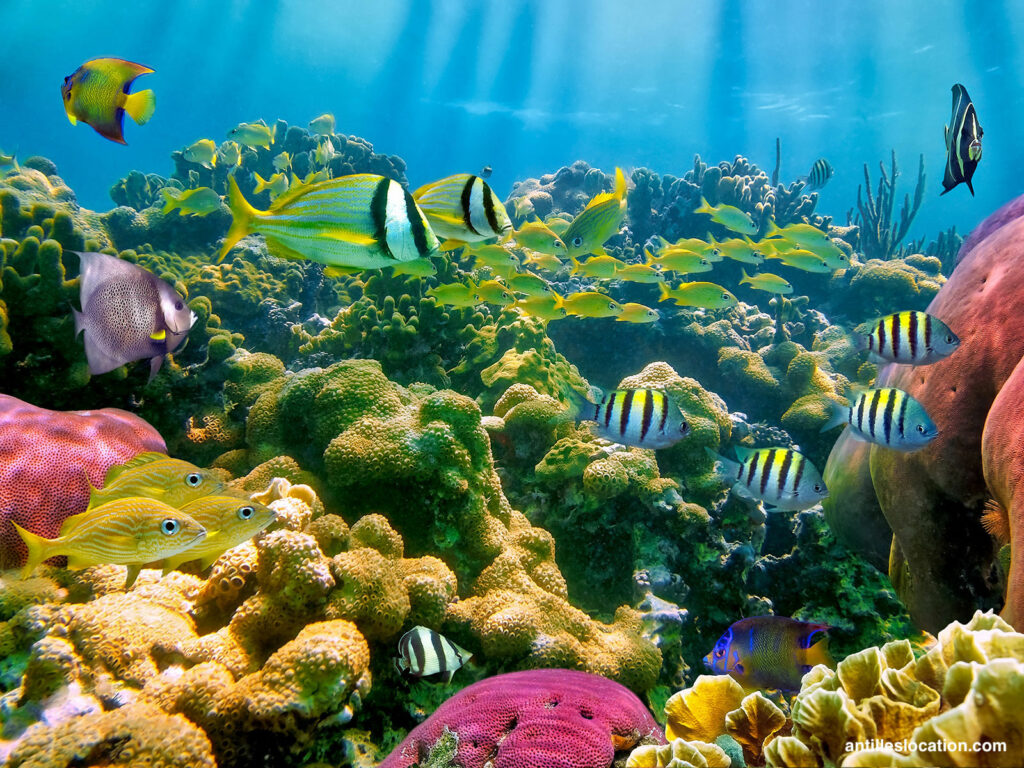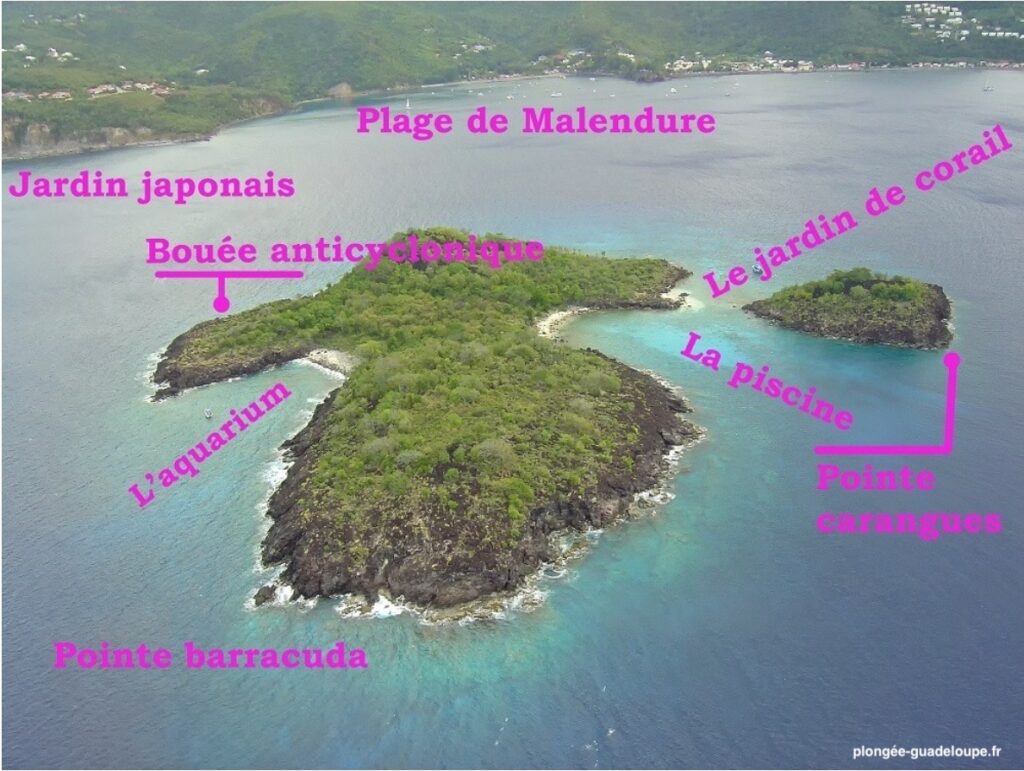
Pigeon islands
Description
1100 meters away from the coast of the municipality of Bouillante, are the Pigeon islets or
Goyave islets. With a total area of 8 ha (7 ha for the large islet and 1 ha for the small one), both
islets are formed by volcanic substrate. Separated by a 30 meter channel, they harbor a very
important marine biodiversity in their waters.
Its seabed, a carpet of volcanic rocks, is also home to three sunken wrecks. Refuge for aquatic
fauna, these “almost” blend in with the underwater landscape. Given this absolute beauty,
Commander Jacques-Yves Cousteau promoted the classification of the site as a Nature Reserve
in 1974. That is why the site is also called “Réserve Cousteau”. Thanks to this title, it attracts
about 60,000 divers a year and is one of the largest dive sites in France.
Biodiversity
The volcanic substratum, in its submerged part, allows the installation of coral, where turtles,
multicolored fish, mollusks, sponges and gorgonians live. Hard coral, also called non-
bioconstructed* (since it needs a base to develop) is deposited on top of this mineral base. Due
to its formation and its strong resilience, this coral reef* and the species that depend on it are
an example of the concentration of biodiversity in the French Antilles. The terrestrial fauna is
made up of sedentary birds and the velvety free-tailed bat (Molossus molossus), which are
threatened due to the invasion of species such as the black rat (Rattus rattus).
As for the vegetation, although the islands are home to dry coastal vegetation dominated by
manchineel tree (Hippomane mancinella), pink manjack (Tabebuia heterophylla) and white
frangipani (Plumeria Alba), but there are also endemic species to the Indies Western ones such
as the Black willow (Capparis indica) and the Jewels of Opar (Talinum paniculatum); finally,
on the rocks the most notable species is the Red prickle (Opuntia dillenii).
Ecotourism potential
These islets and their biodiversity represent a unique area where marine and terrestrial flora
and fauna coexist in symbiosis. Both are part of the ZNIEFF* territories (Natural Areas of
Ecological, Faunistic and Floristic Interest). Diving, snorkeling, kayaking and boating are some
of the activities that can be done in this reserve. Finally, it is important to know how to protect
this place by visiting it without damaging it. Favoring activities that are not intensive in energy
and/or pollutants seems to be the solution for this place, which concentrates most of its
activities between the black sand beach and the islets


Sources :
« depliant_ilets-pigeon_6_volets_png.pdf » https://www.google.com/url?sa=t&rct=j&q=&esrc=s&source=web&cd=&cad=rja&uact=8&ved=2ahUKEwiHx4r5_6T-AhUxr4QIHQpjAeoQFnoECDkQAQ&url=http%3A%2F%2Fwww.guadeloupe-parcnational.fr%2Ffr%2Fdownload%2Ffile%2Ffid%2F550&usg=AOvVaw3Dl0OoUMqwaHsZmOiQ0Hcg
« ZNIEFF 010000006 GRAND ET PETIT ÎLETS DE PIGEON » https://inpn.mnhn.fr/zone/znieff/010000006/tab/commentaires
Informations
-
Types de milieux
Îlets -
Location
Guadeloupe (Bouillante)

